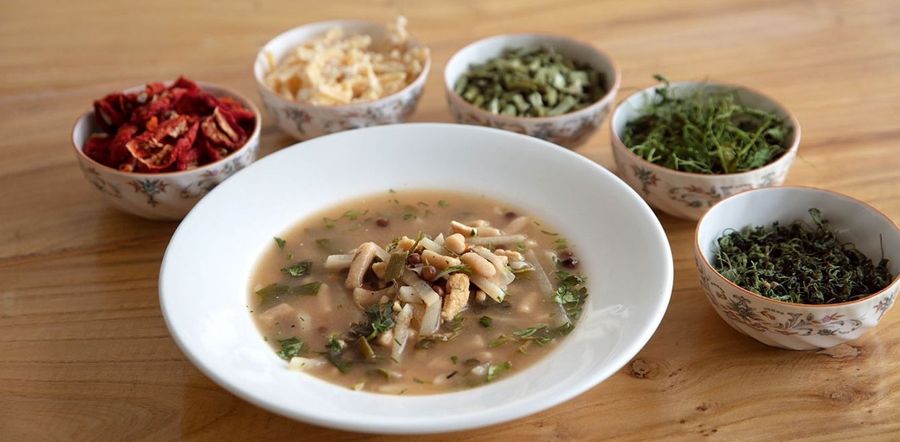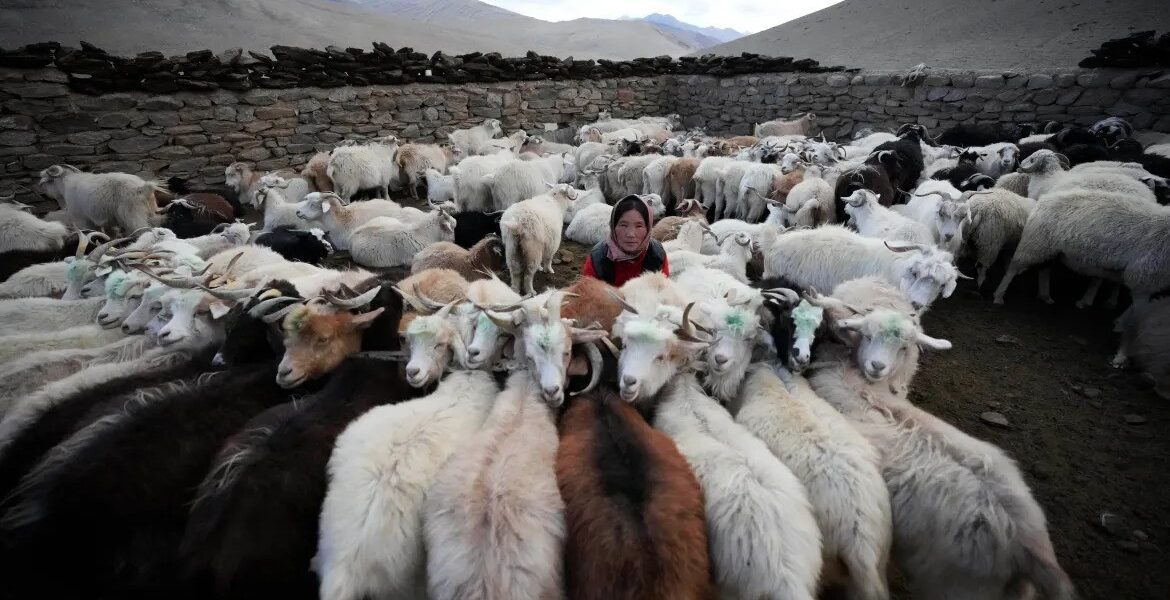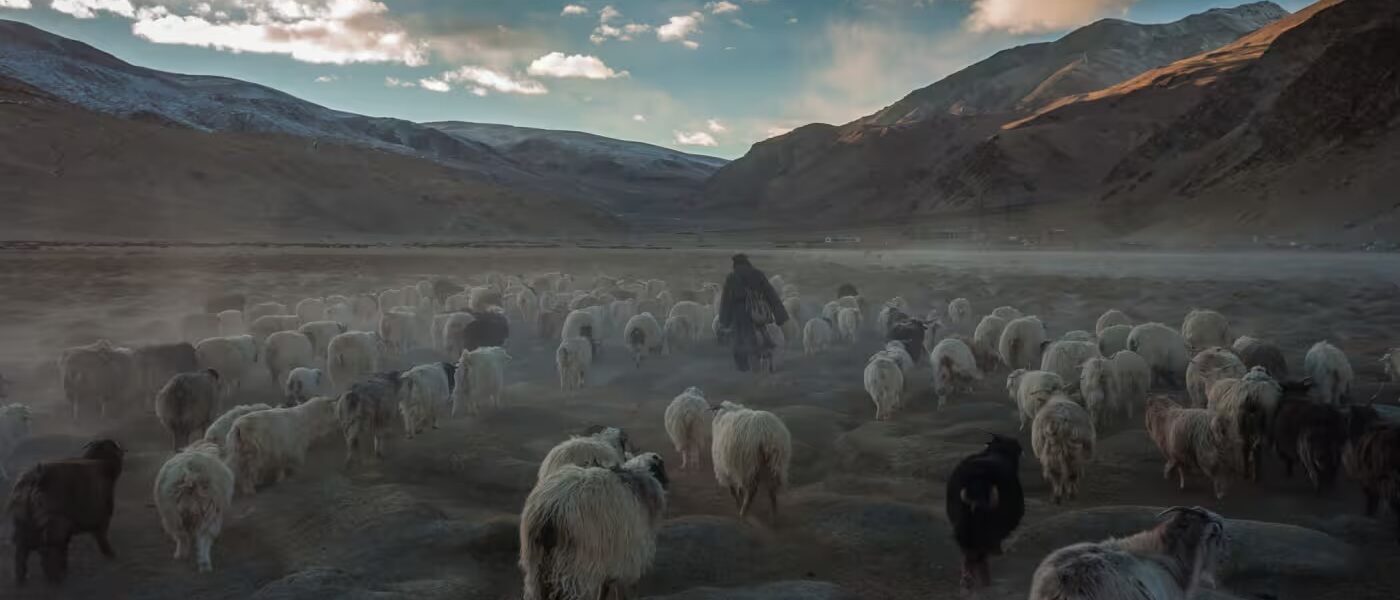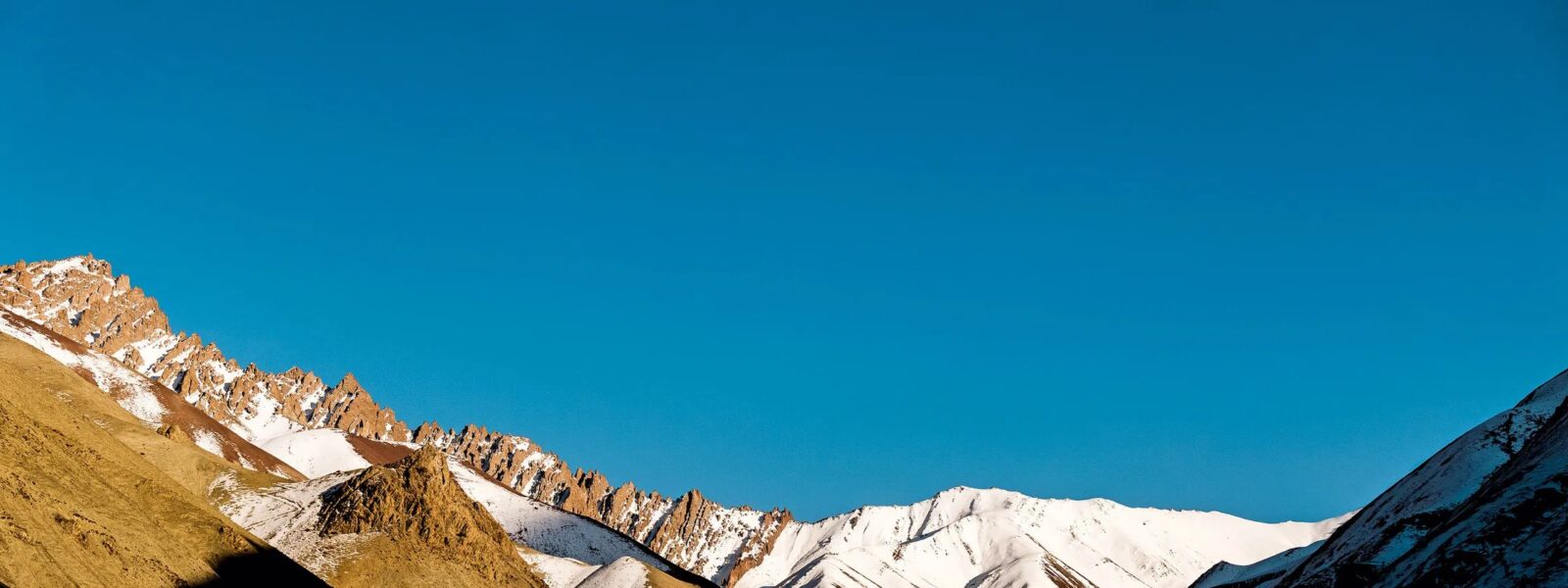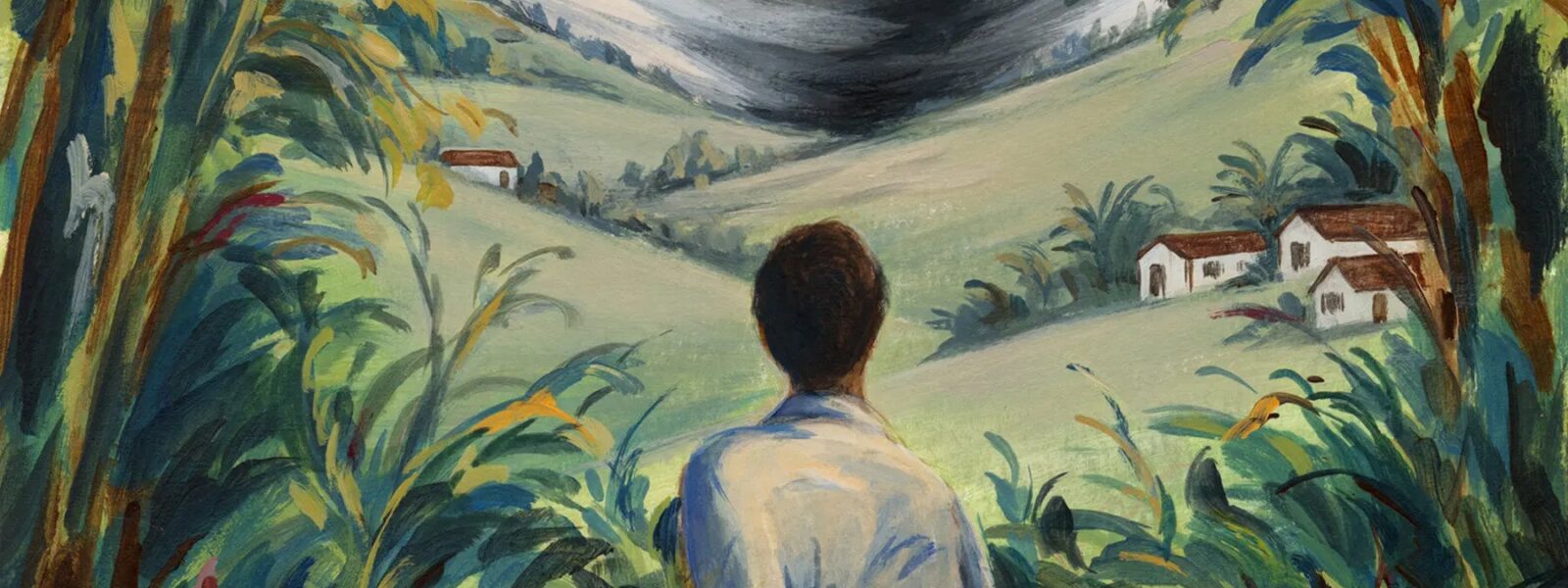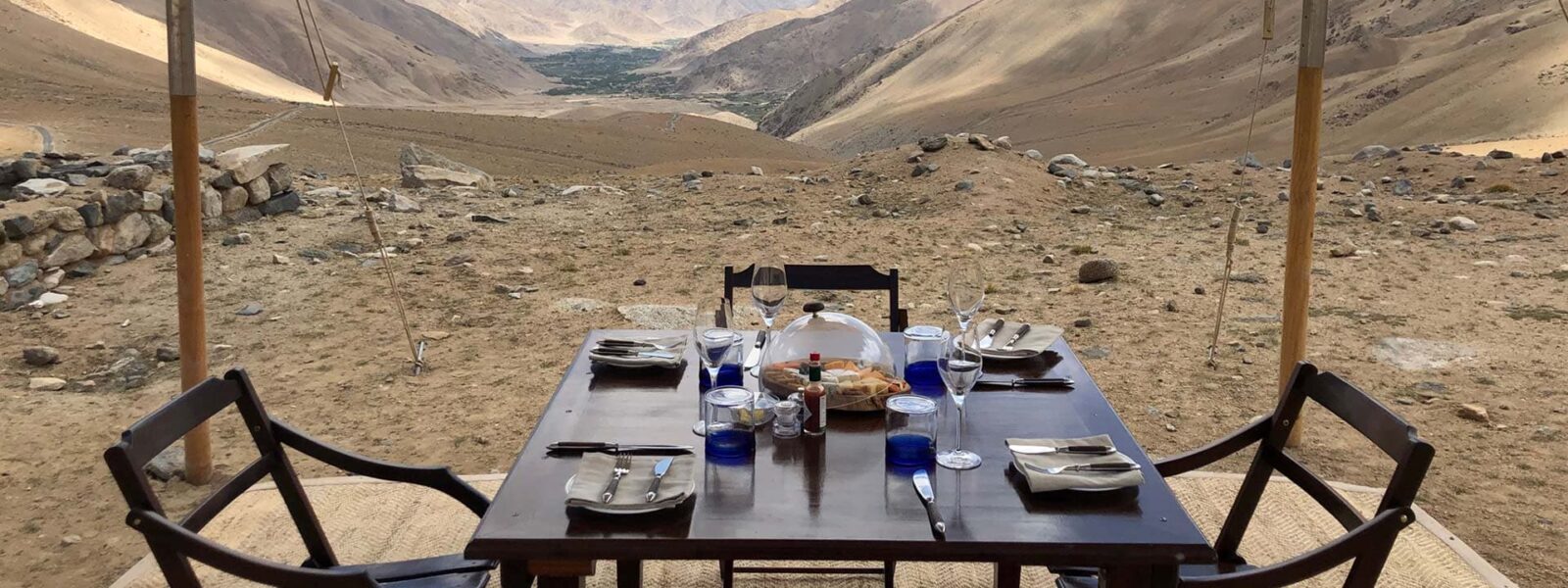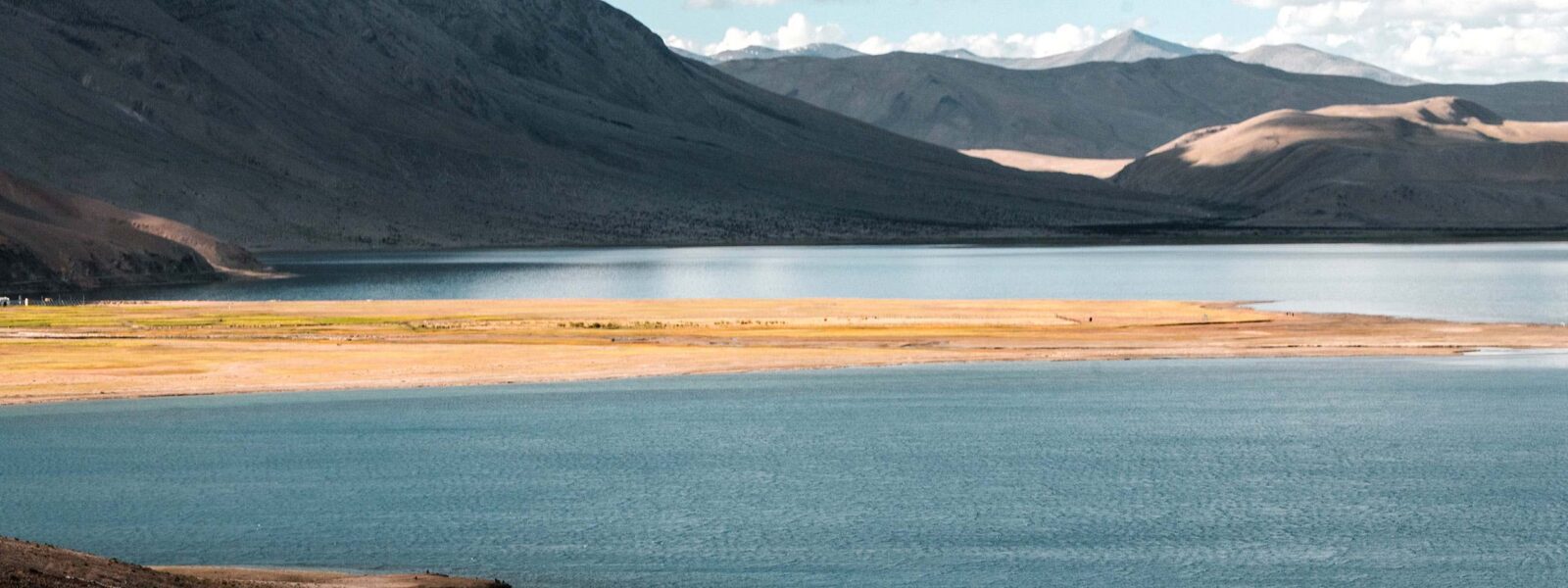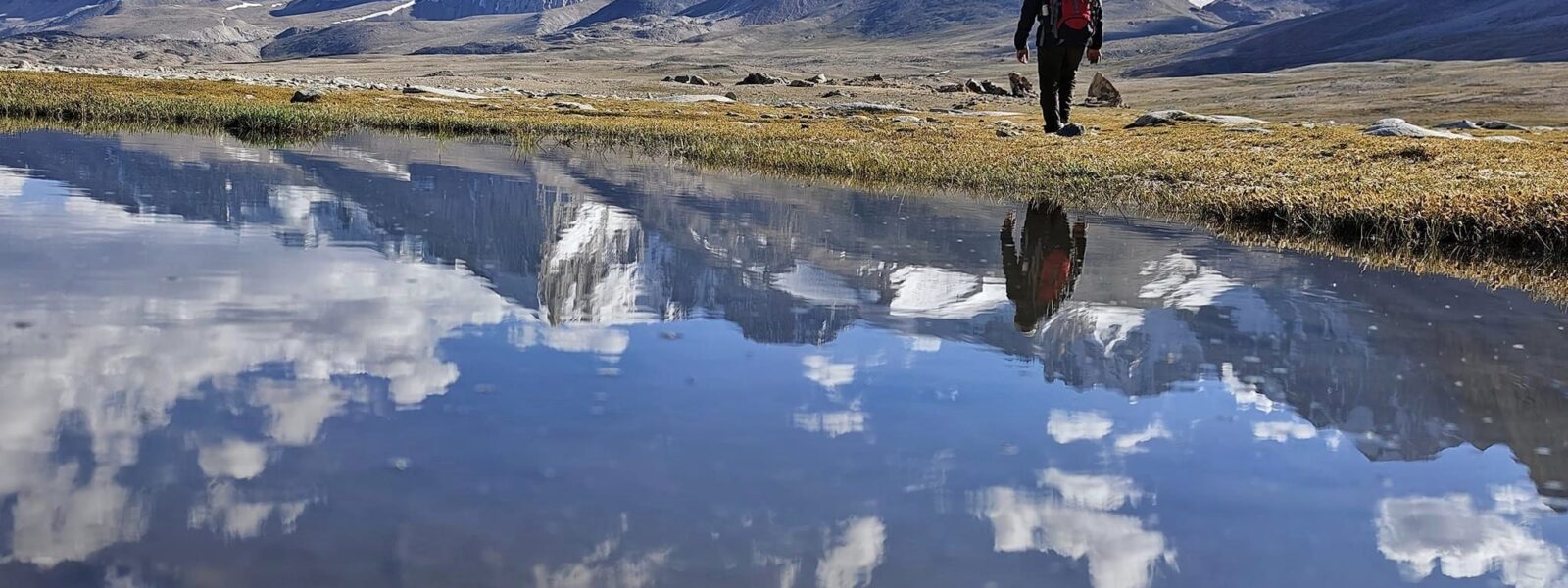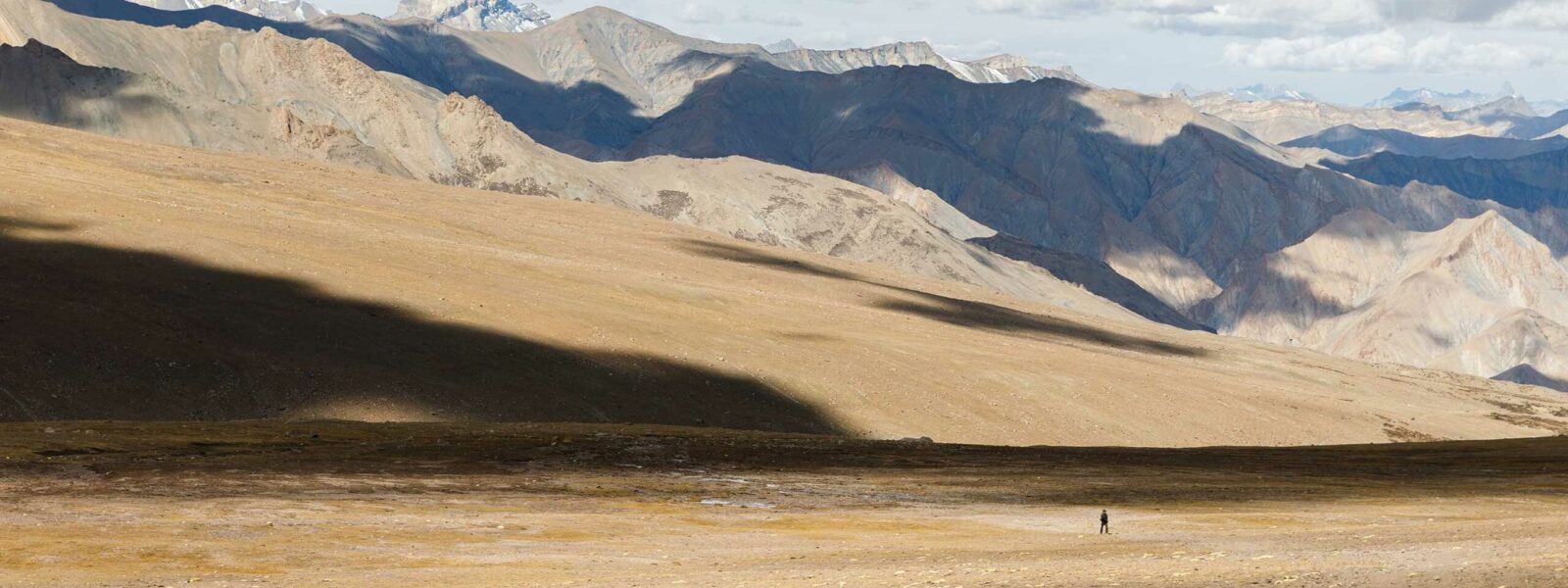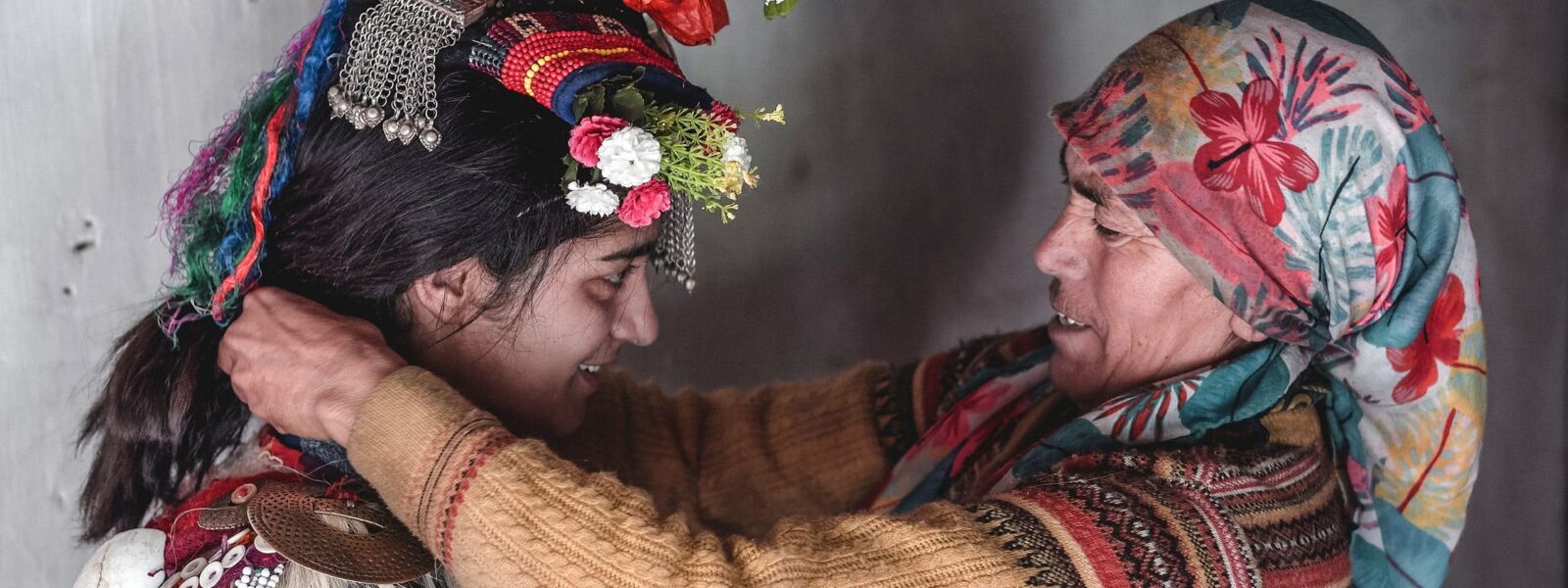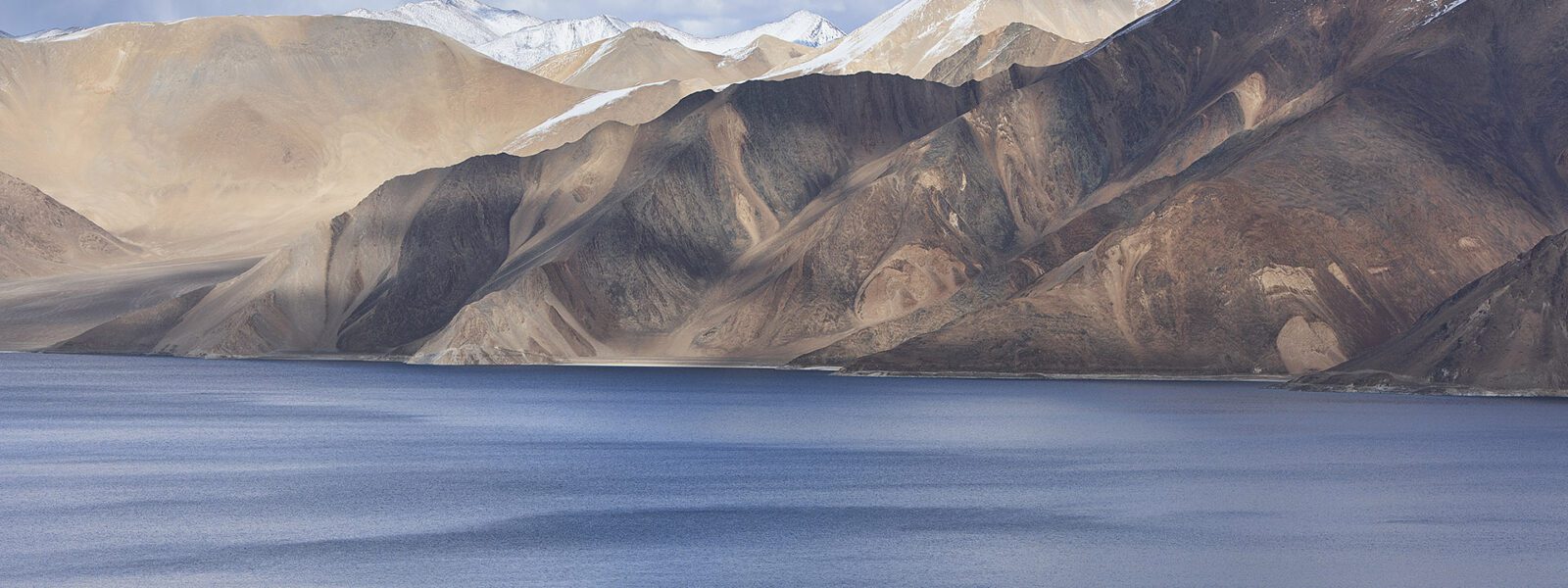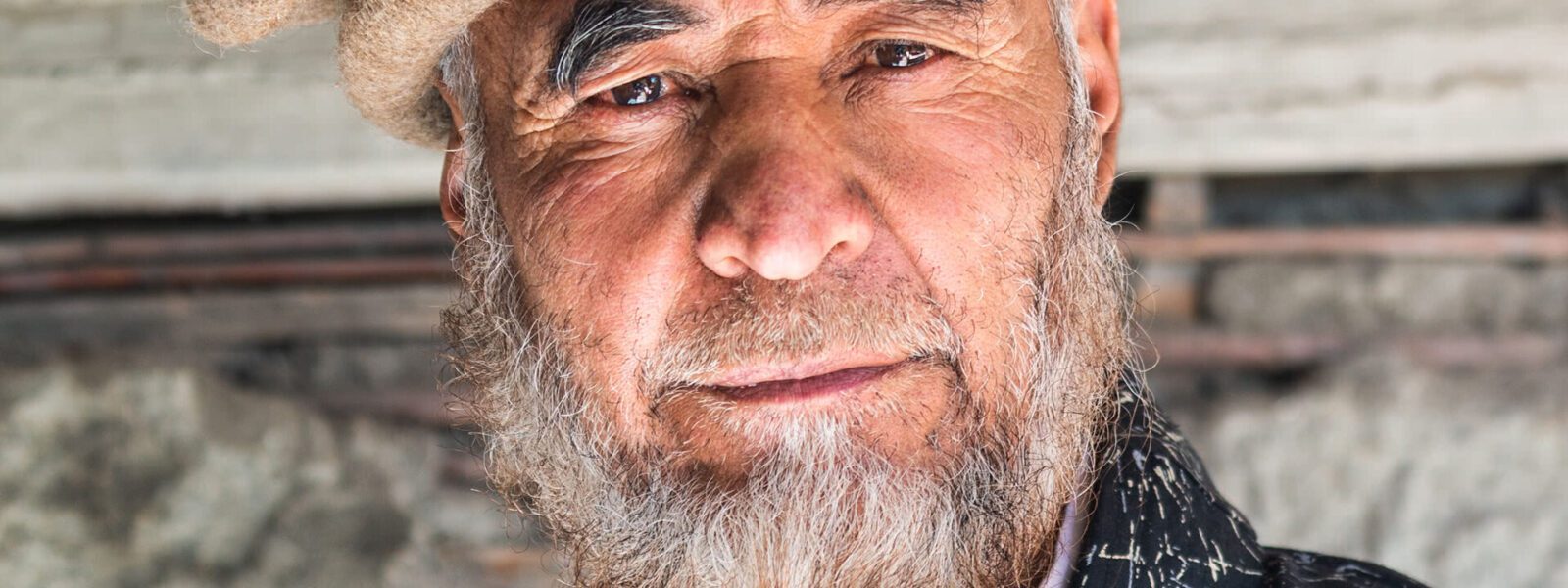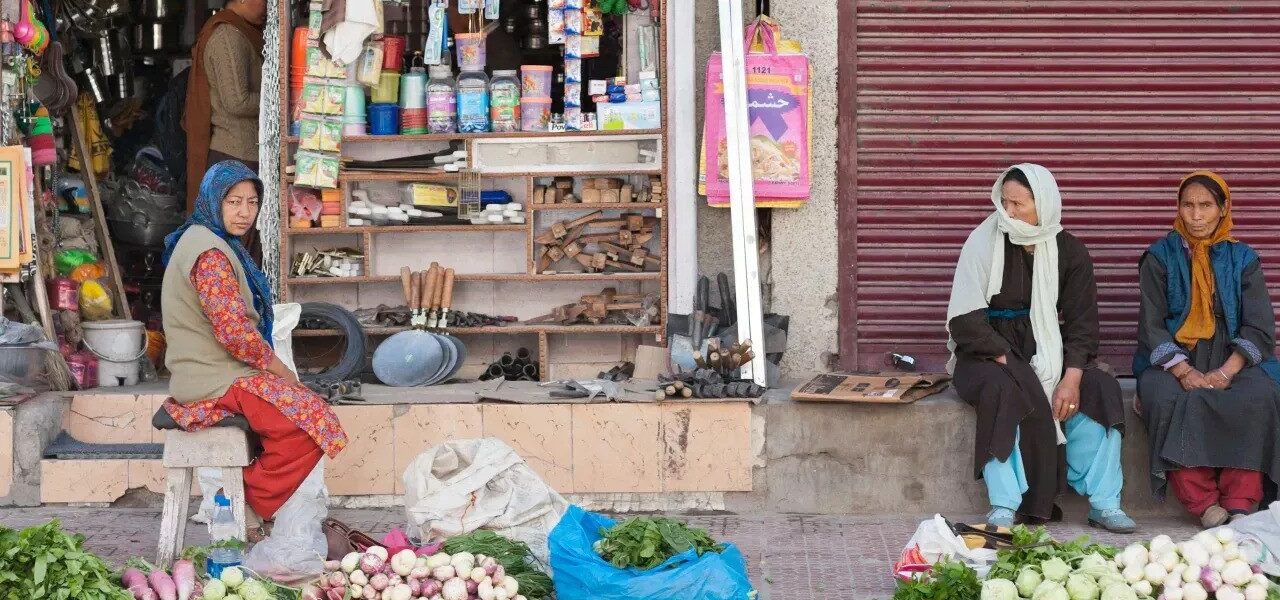Unveiling the Rich Tapestry of Ladakhi Cuisine
When we think of Ladakhi food, the images that often come to mind are momos and thukpa. Yet, this is only the surface of Ladakh’s rich culinary heritage. It’s time to look beyond these familiar dishes and delve into the diverse flavors that define this region.
Like many, I once associated Ladakhi cuisine solely with momos and thukpa. This narrow view changed dramatically during a traditional feast at the king’s palace, where I discovered the depth of Ladakhi culinary traditions that had eluded me.

Food is more than just a necessity; it is a reflection of a region’s history and culture. Exploring a new place is incomplete without immersing oneself in its local cuisine, which serves as a key to understanding its culture and traditions. My journey to Ladakh reinforced this lesson profoundly.
Though Ladakh is a well-known destination, thanks to social media and its breathtaking landscapes featured in numerous films, its culinary scene remains relatively unexplored. While landmarks like Nubra Valley, Pangong Lake, and Khardungla Pass are widely recognized, Ladakhi food is often misunderstood and reduced to just momos and thukpa. The reality is far more intricate.
Ladakh, with its cold, high-altitude desert environment, has been a melting pot of cultures throughout history. As a crucial stop on the ancient Silk Route, it absorbed influences from Tibet to the east, Central Asia to the north, and Dardistan to the west. This intersection of cultures has given rise to unique food traditions that are rarely found elsewhere in the Indian subcontinent or even Tibet.

During my recent visit to Ladakh, I admitted to Vilayat Ali—a filmmaker and passionate travel curator—that my knowledge of local cuisine was limited. This led to an unexpected invitation to experience an authentic Ladakhi meal. The next day, I found myself at Stok Palace, a majestic heritage site belonging to the Ladakhi royal family, where we were greeted by King Jigmed Namgyal. He spoke about the importance of preserving Ladakh’s architectural and cultural heritage amid the pressures of tourism.
The highlight of this visit was undoubtedly the meal. The feast, crafted by Kunzes Angmo of Artisanal Alchemy, showcased the essence of Ladakhi cooking. Given the harsh winters of Ladakh, the local diet traditionally emphasizes carbohydrates and fats, with red meat being a staple. However, as a vegetarian, I was treated to a specially curated vegetarian menu that still captured the essence of Ladakhi flavors.
This experience underscored how food is a vital part of Ladakh’s cultural fabric and offered a deeper appreciation of its culinary diversity.

A Culinary Journey Through Ladakh: A Feast at Stok Palace
Perched on the terrace of Stok Palace with a sweeping view of the charming Stok village, Angmo greeted us with a warm smile and a promise of a culinary adventure. “This vegetarian feast reflects the essence of our heritage,” she began. “It’s a celebration of the food traditions passed down through generations, meticulously crafted for sustenance.”
Ladakhis are known for their resilience and resourcefulness. They cultivate their own food and rely on time-honored preservation techniques when the harsh winters render the land barren. Vegetables and fruits are preserved through lacto-fermentation and drying methods, while dairy products are central to their diet. Carbohydrates come from organic whole wheat, harvested from ancestral fields and milled using traditional methods.
Ladakhi cuisine stands apart from typical Indian fare. It eschews spices like turmeric, garam masala, and red chili powder. Instead, it features freshly ground pepper, a variety of fresh and dried herbs including cilantro, wild chives, onion greens, Chinese celery, and wild horsemint, along with yellow Manali chili for added spice.

Our meal began with tsong thaltak, a whole-wheat onion biscuit-bread topped with poppy seeds. This bread is traditionally baked in large, round, flat-lidded iron containers, buried in embers from dry leaves that smolder overnight. Alongside were khambir, a traditional sourdough whole-wheat bread, and bazaar-e-tagi, a type of flatbread. These were paired with zathuk, a nettle soup, and tangthur, a yogurt dip made from foraged weeds. Fresh homemade butter, or khagla, enhanced the flavors of these appetizers.
The main course featured lama pakthuk, or ‘monk’s thukpa,’ a noodle soup prepared in monasteries and served to monks visiting households. This hearty dish, perfect for Ladakh’s freezing temperatures, included dried local cheese, black peas, julienned turnips, Chinese radishes, and wild buckwheat leaves. Seasoned with freshly ground pepper, butter, and cilantro, it was a comforting staple in Ladakhi cuisine. I learned that thukpa is as prevalent in Ladakh as dal is in North India, with numerous variations made from whole-wheat and buckwheat noodles, dumplings, barley flour, rice, and vegetables.

The only rice dish on our menu was Yarkhandi pulao, a unique dish from Yarkhand, China, that journeyed to Ladakh via the southern Silk Route tributaries. Although its name suggests otherwise, it bears more resemblance to Afghani or Mongolian pilaf rather than South Asian pulao. Typically cooked with large pieces of meat, I enjoyed a vegetarian version made with julienned baby carrots, basmati rice from Jammu, and aromatic spices. Garnished with fried onions and roasted nuts, it was complemented by o-chutagi, a local bow-tie pasta cooked in milk with a root vegetable. This was paired with kabra, stir-fried dried wild caper shoots in bitter apricot oil, and thangnyer chutney, a spicy dip made with yellow Manali chili.
This feast was more than just a meal—it was a gateway into the rich tapestry of Ladakhi culture and tradition.
A Flavorful Exploration of Ladakhi Cuisine
Our culinary adventure continued with drapu, whole-wheat dumplings simmered in a sweet apricot kernel sauce. Paired with chuli-chu, a homemade apricot beverage, this dish was a delightful treat. Immersed in lively discussions about the origins and stories behind each ingredient, I lost track of time, savoring every bite. When it was time to prepare for the final course, I was both content and eager for what was to come.

For dessert, we began with dried organic apricots, rehydrated overnight for a burst of natural sweetness. The meal concluded with paktsa marku—whole-wheat dumplings cooked in butter and sugar, then sprinkled with powdered dried cheese. This final dish was the perfect sweet ending to our feast.
This culinary journey provided a deeper understanding of Ladakh than any of my previous visits. Next time you find yourself in this beautiful region, make sure your experience includes a taste of its rich food heritage. Each meal serves as a delicious chapter in Ladakh’s history.
5 Ladakhi Dishes You Must Try
– Tsong Thaltak: Whole-wheat onion bread
– Lama Pakthuk: Monk’s thukpa
– O-Chutagi: Local pasta
– Drapu: Whole-wheat dumplings
– Chhurpi: Cheese made from yak milk
The palace cuisine mentioned above can also be arranged by LIFE on the PLANET LADAKH. If you are interested, please feel free to contact us.
The Reference Article ラダック料理の真髄を探る:感動の味と伝統が織り成す至福のひととき
Ladakhi Cuisine
Ladakhi Cuisine | The article summarizes Ladakhi Cuisine ‘s transformative journey, likening it to effortless fishing where interaction Ladakhi Cuisine s naturally gravitated toward her. Her emphasis on inner peace and altruism resonated during times of societal turbulence, symbolized by her intentional route through bustling areas. Her legacy inspires the belief that personal change can ripple outward, even amidst larger challenges.

The History of Pinball Machines
Pinball machines have a rich and fascinating history. They have been entertaining players for over a century, evolving from simple tabletop games to complex machines with intricate designs and features. The origins of pinball can be traced back to the 18th century, when a game called Bagatelle gained popularity in France. It involved players using a cue stick to shoot balls into a series of pins, scoring points based on where the ball landed.
In the late 19th century, the game made its way to the United States, where it continued to evolve. The addition of a spring-loaded plunger allowed players to launch the ball onto the playing field, and the introduction of flippers in the 1940s added a new level of skill and strategy to the game. Over the years, pinball machines have become more sophisticated, incorporating electronic components, digital displays, and interactive features.
Why Visit a Ladakhi Cuisine ?
There are many reasons why you should visit a Ladakhi Cuisine . Firstly, it’s a great way to support local businesses. Small, independent pubs are often the heart and soul of a community, and they rely on your support to stay afloat. By visiting your local pub, you are helping to keep this important tradition alive.
Secondly, pubs are a great place to socialize and meet new people. Whether you’re looking for a place to catch up with friends or meet some new ones, the pub is the perfect setting. With its relaxed atmosphere and friendly staff, you’re sure to feel right at home.

Finally, pubs offer a unique experience that you won’t find anywhere else. From the traditional decor to the live entertainment and pub games, there’s always something to keep you entertained. Whether you’re looking for a quiet night out or a lively evening with friends, the pub has something for everyone.
Finding the Best Ladakhi Cuisine in Your Area
Finding the best Ladakhi Cuisine in your area can be a daunting task, especially if you’re new to the area. However, there are a few things you can do to make the process easier. Firstly, ask around. Talk to your friends and family and see if they have any recommendations. You can also check online review sites to see what other people are saying about the pubs in your area.

Another great way to find the best pubs in your area is to go on a pub crawl. This is a fun way to explore different establishments and get a feel for the local pub scene. Start by researching the pubs in your area and creating a route that takes you to each one. Make sure to pace yourself and enjoy each pub to its fullest.
Pub Atmosphere and Decor
One of the things that makes Ladakhi Cuisine so special is their atmosphere and decor. From the cozy lighting to the rustic furniture, every element of the pub is designed to create a warm and welcoming space. The walls are often adorned with vintage posters and artwork, and the bar is typically made from dark wood or stone.

The lighting is also an important part of the pub atmosphere. Many pubs use low lighting to create a cozy, intimate feel. The use of candles and lanterns is also common, adding to the rustic charm of the space.
Ladakhi Cuisine
No visit to an English pub would be complete without sampling some of the traditional pub food and drinks on offer. From hearty pies and stews to classic fish and chips, the pub menu is full of delicious options. Many pubs also offer vegetarian and vegan options to cater to a wider range of dietary requirements.

When it comes to drinks, beer is the most popular choice in Ladakhi Cuisine . From classic ales to refreshing lagers, there’s a beer for everyone. Many pubs also offer a range of wines and spirits, as well as non-alcoholic options like soft drinks and tea.
Ladakhi Cuisine
Live entertainment is another big part of the pub experience. Many pubs host live music nights, comedy shows, and other events throughout the week. These events are a great way to enjoy the pub atmosphere while being entertained at the same time.
Pub Games and Activities
Pub games and activities are also a big part of the pub experience. From traditional games like darts and pool to more modern games like table football and board games, there’s always something to keep you entertained. Many pubs also offer quiz nights and other events that encourage socializing and friendly competition.
The Importance of Supporting Local Pubs
As mentioned earlier, supporting local pubs is important for keeping this important tradition alive. Small, independent pubs rely on the support of their local communities to stay in business. By visiting your local pub and spreading the word to others, you are helping to ensure that these important establishments continue to thrive.
Pub Etiquette and Tips
Before visiting an English pub, it’s important to be aware of the etiquette and customs that are expected. Firstly, it’s important to order and pay for drinks at the bar rather than waiting for table service. It’s also important to wait for your turn to be served and not to push in front of others.
British Pub

When it comes to tipping, it’s not customary to tip at Ladakhi Cuisine . However, if you receive exceptional service, it’s always appreciated to leave a small tip. Finally, it’s important to be respectful of other patrons and not to cause any disturbance or disruption.
Conclusion: Enjoying the Ladakhi Cuisine
In conclusion, visiting an English Ladakhi Cuisine is a great way to unwind, socialize, and enjoy a unique cultural experience. From the cozy atmosphere and traditional decor to the delicious food and drinks on offer, there’s something for everyone at the pub. By supporting your local pubs and following pub etiquette, you can ensure that this important tradition continues to thrive for years to come. So why not grab some friends and head down to your local pub today?
As a lover of English culture, I have always been drawn to the charm of traditional Ladakhi Cuisine . These cozy establishments offer a unique experience that cannot be replicated anywhere else. Whether you’re a local or a tourist, there is always something special about finding a great Helena Ladakhi Cuisine . In this article, I will be exploring the best Ladakhi Cuisine in your area, discussing everything from the atmosphere and decor to the food, drinks, and entertainment on offer.
The Charm of Ladakhi Cuisine
There’s something special about the atmosphere of an English pub. These cozy, welcoming spaces are designed to make you feel right at home. With their low ceilings, wooden beams, and roaring fireplaces, Ladakhi Cuisine exude a sense of warmth and comfort that is hard to find anywhere else. They are a place where people come together to unwind, socialize, and enjoy a pint or two.

The history of Ladakhi Cuisine is also a big part of their charm. Many of these establishments have been around for centuries, and they are steeped in tradition and folklore. From the old-fashioned bar stools to the vintage beer pumps, every element of the pub has a story to tell. For lovers of history and culture, visiting an English pub is a must.
Why Visit a Ladakhi Cuisine ?
There are many reasons why you should visit a Ladakhi Cuisine . Firstly, it’s a great way to support local businesses. Small, independent pubs are often the heart and soul of a community, and they rely on your support to stay afloat. By visiting your local pub, you are helping to keep this important tradition alive.
Secondly, pubs are a great place to socialize and meet new people. Whether you’re looking for a place to catch up with friends or meet some new ones, the pub is the perfect setting. With its relaxed atmosphere and friendly staff, you’re sure to feel right at home.

Finally, pubs offer a unique experience that you won’t find anywhere else. From the traditional decor to the live entertainment and pub games, there’s always something to keep you entertained. Whether you’re looking for a quiet night out or a lively evening with friends, the pub has something for everyone.
Finding the Best Ladakhi Cuisine in Your Area
Finding the best Ladakhi Cuisine in your area can be a daunting task, especially if you’re new to the area. However, there are a few things you can do to make the process easier. Firstly, ask around. Talk to your friends and family and see if they have any recommendations. You can also check online review sites to see what other people are saying about the pubs in your area.

Another great way to find the best pubs in your area is to go on a pub crawl. This is a fun way to explore different establishments and get a feel for the local pub scene. Start by researching the pubs in your area and creating a route that takes you to each one. Make sure to pace yourself and enjoy each pub to its fullest.
Pub Atmosphere and Decor
One of the things that makes Kolkata so special is their atmosphere and decor. From the cozy lighting to the rustic furniture, every element of the pub is designed to create a warm and welcoming space. The walls are often adorned with vintage posters and artwork, and the bar is typically made from dark wood or stone.

The lighting is also an important part of the pub atmosphere. Many pubs use low lighting to create a cozy, intimate feel. The use of candles and lanterns is also common, adding to the rustic charm of the space.
Traditional English Ladakhi Cuisine
No visit to an English pub would be complete without sampling some of the traditional pub food and drinks on offer. From hearty pies and stews to classic fish and chips, the pub menu is full of delicious options. Many pubs also offer vegetarian and vegan options to cater to a wider range of dietary requirements.

When it comes to drinks, beer is the most popular choice in Ladakhi Cuisine . From classic ales to refreshing lagers, there’s a beer for everyone. Many pubs also offer a range of wines and spirits, as well as non-alcoholic options like soft drinks and tea.
Live Entertainment at Local Ladakhi Cuisine
Live entertainment is another big part of the pub experience. Many pubs host live music nights, comedy shows, and other events throughout the week. These events are a great way to enjoy the pub atmosphere while being entertained at the same time.
Ladakhi Cuisine and Activities
Pub games and activities are also a big part of the pub experience. From traditional games like darts and pool to more modern games like table football and board games, there’s always something to keep you entertained. Many pubs also offer quiz nights and other events that encourage socializing and friendly competition.
The Importance of Supporting Local Ladakhi Cuisine
As mentioned earlier, supporting local pubs is important for keeping this important tradition alive. Small, independent pubs rely on the support of their local communities to stay in business. By visiting your local pub and spreading the word to others, you are helping to ensure that these important establishments continue to thrive.
Ladakhi Cuisine and Tips
Before visiting an English pub, it’s important to be aware of the etiquette and customs that are expected. Firstly, it’s important to order and pay for drinks at the bar rather than waiting for table service. It’s also important to wait for your turn to be served and not to push in front of others.
Medical trekking
Spa trail Wellness
Life on The Planet LADAKH

When it comes to tipping, it’s not customary to tip at Ladakhi Cuisine . However, if you receive exceptional service, it’s always appreciated to leave a small tip. Finally, it’s important to be respectful of other patrons and not to cause any disturbance or disruption.
Conclusion: Enjoying the Ladakhi Cuisine Near You
In conclusion, visiting an English Ladakhi Cuisine is a great way to unwind, socialize, and enjoy a unique cultural experience. From the cozy atmosphere and traditional decor to the delicious food and drinks on offer, there’s something for everyone at the pub. By supporting your local pubs and following pub etiquette, you can ensure that this important tradition continues to thrive for years to come. So why not grab some friends and head down to your local pub today?







